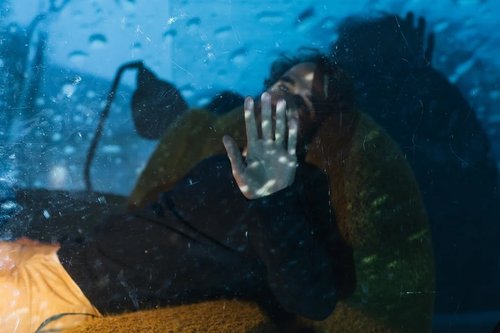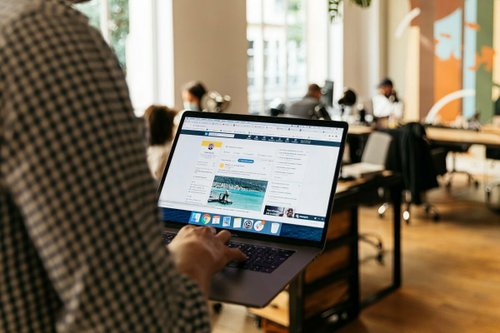Inside Clubhouse: the invite-only app changing the way we network
Mar 24, 2021
6 mins


Multilingual journalist
If you think of all the interesting people you could have met and spoken to over the past year, but didn’t due to the pandemic, it’s easy to understand the hype surrounding Clubhouse. The audio-only networking app is all about connecting through live conversations and has been described as the new LinkedIn. But you need the invitation to join, and the app only runs on iOS. So should you worry about not being in the club? Here we take a look at how the exclusive platform is changing professional networking.
Hanging out in a Clubhouse “room” can sound like a podcast with a very loose script, an aggressive sales pitch, an amateur radio show, or feel like eavesdropping on a phone conversation. There is an element of surprise to the experience—you never know how a talk might turn out or who might turn up in a room.
The drop-in audio app Clubhouse emerged from Silicon Valley in March 2020 and rapidly grew in popularity: it is now considered a unicorn startup worth $1 billion. Nearly 13 million people worldwide have already downloaded the invite-only, iOS app, with more than 375,000 downloads in the UK alone.
Users can create clubs—there’s the Millionaire Breakfast Club, Networking Horizontally or Dragon Slayers to name a few—or host rooms, which can take the form of panels, pitch sessions, informal discussions, pep talks or even concerts. The events can be public or private, and users can simply drop in and listen along, “raise a hand” if they wish to contribute, or “leave quietly” when they’ve had enough. Clubs, conversations, and people fall under key topics and subtopics, which makes it easier to connect with users interested in, for example, pitch practice, coworking, or, very specifically, Burning Man.
A new space for professional networking
The audio-only platform has drawn comparisons to LinkedIn in terms of professional networking and knowledge sharing. “Clubhouse is all about being able to tap into these amazing conversations,” said networking strategist Jeni Smith, founder of Networking KnoWho. She believes that networking on the platform can also be more organic and open because it’s about connecting through voice only. “I think it’s brilliant that you’re faceless, so you join in conversations without needing to turn your camera on and worrying about your lighting,” she said.
US tech workers were among the first to jump on the Clubhouse bandwagon. Kassie Ingalls is based in Colorado and switched to UX/UI design last year after working in advertising. In January, a LinkedIn post about an upcoming chat with two designers working for big tech companies on an app called Clubhouse caught her attention.
Ingalls thought the talk could help advance her new tech career—and she was right. “I would never have had the chance to talk to them [the two designers] and it was so insightful. They had a very candid conversation about the tech recruitment process, specifically for big companies like Facebook and Google, which they had worked with,” she said. The chat ended with the moderators calling the 15 participants on “stage”, which means they were unmuted to introduce themselves and could connect with one another on LinkedIn afterward.
“Clubhouse is all about being able to tap into these amazing conversations. I think it’s brilliant that you’re faceless, so you join in conversations without needing to turn your camera on and worrying about your lighting.”
Since Ingalls’ first networking experience on Clubhouse, she has listened to talks with designers from San Francisco to Miami has been offered mentorship, and has also started co-hosting a regular Clubhouse room, From Junior Designers to Junior Designers, to help “people who are in my position to advance [their careers] as well”.
What sets Clubhouse apart is that it tries to imitate the fleeting and fortuitous nature of real-life discussions. “When you can hear my voice and hear how I speak, it adds a whole different human level,” said Ingalls. She believes that finding and forging such connections wouldn’t have been possible on LinkedIn.
Inside the club
Recording is against Clubhouse rules, and there’s no way to edit and save content for later. With its emphasis on the ephemeral experience, Clubhouse fever boils down to that fear of missing out—on a talk that everybody will be talking about later, or a chance to speak up in a room hosted by that big CEO or hiring lead.
But the allure of Clubhouse also emanates from its invite-only model. Each user’s profile mentions who “nominated” them—let them in the club—which adds a have-you-seen-me-with aspect to networking on the platform. People are begging for invitations across social media platforms, and some are even selling them on eBay for anything from $0.99 to $125.
Founders Rohan Seth and Paul Davison explain in their blog that the exclusive model is temporary because the app isn’t ready for massive overnight growth. “From the earliest days, we’ve wanted to build Clubhouse for everyone,” they wrote. The business is working on the Android version and has announced its goal to open the service to the whole world later this year.
“When you can hear my voice and hear how I speak, it adds a whole different human level.”
Meanwhile, the exclusivity of Clubhouse has translated into a bias in the app’s user base—which has, in turn, created a distinct Clubhouse vibe. Not everyone enjoys it. Jonathan Tesser is a data lead, career coach, and LinkedIn influencer (a term he dislikes). When he started using Clubhouse, he was frustrated to find a platform awash with a spirit of competitiveness, “with the braggadocio on top of, essentially, insecurity and arrogance”.
Tesser believes Clubhouse isn’t a place for being authentic and networking with people who are genuinely interested in others—at least not at the moment. “The problem is with the people who are drawn to the early version of Clubhouse,” he said, adding that the app hasn’t yet reached mass awareness, nor what he calls his LinkedIn “tribe”.
Exclusive opportunities
Within the universe of Clubhouse, exclusiveness also depends on room size. Conversations peak at 5,000 users, but smaller rooms tend to be more intimate and informal. Networking strategist Smith is interested in the question of exclusivity in networking. She has created a model called “the networking ecosystem”, which separates the world of in-person networking into eight zones. The first four are accessible to everyone, while the second half is accessible to some in exchange for paid tickets or invitations, or are defined by the duration of the relationship.
Transposing this ecosystem to the online world, Smith compares Clubhouse to the sixth zone. It includes invitation-only events—such as hospitality events and fashion shows—which are often not classed as networking events, “but are hugely important, valuable networking opportunities”, she said, “because [people are] building those relationships in a socially more relaxed environment. They get to know people in a different environment, and that feels like what Clubhouse is.”
Tesser admits that despite his criticisms of Clubhouse, he is going to keep using it because he simply doesn’t want to miss out. “I go on [Clubhouse] because I need to be seen with other LinkedIn influencers. They’re all on the platform talking about what they do, and how they do it. I want to maintain those relationships,” he said.
Some Clubhouse users choose to experiment with the platform but use it sparingly. In January, creative producer Isabel Sachs began co-hosting a weekly Clubhouse room called the Networking Studio, which she started as “a space to talk about the creative industries, all the hurdles we face, in a relaxed way”. One recent talk focused on networking with impostor syndrome.
Sachs thinks that networking opportunities often come with privilege and elitism, and that this is an issue. In May 2020, she launched I LIKE NETWORKING, an online mentoring and networking platform for female and non-binary professionals in the creative industries. “As a company that promotes diversity and inclusion, I don’t want to put too many events [on Clubhouse],” she said. She sees the current version of Clubhouse as a “window” rather than a standalone networking tool.
“I go on [Clubhouse] because I need to be seen with other LinkedIn influencers. They’re all on the platform talking about what they do, and how they do it. I want to maintain those relationships.”
Clubhouse is already evolving. A peculiar networking trend has emerged: “silent rooms”. Instead of engaging in discussions, users join talks to check each others’ bios and choose those they want to follow on the app and beyond. In the meantime, the platform still has a way to go before it becomes a space open and inclusive for all—and it remains to be seen how the app will change when anyone and everyone can roam its rooms.
As an audio-only platform that focuses on live conversation, it also needs to imagine ways to become a networking tool in its own right rather than a starting point for making meaningful connections.
Photo: Welcome to the Jungle
Follow Welcome to the Jungle on Facebook, LinkedIn, and Instagram, and subscribe to our newsletter to get our latest articles every day!

More inspiration: Build your network

Networking with social anxiety: 5 workers share their tips for dealing with it
For those with social anxiety, networking can feel impossible. See tips from real workers on how to step outside your comfort zone.
Feb 19, 2024

Should I share my life on social media? Our personal branding expert weighs in
In our Insta-globalized age, broadcasting your life online can land you a dream job — or land you in trouble...
Sep 07, 2023

How to get on the radar of people you admire
If you get yourself noticed by the right people and make a good impression, there’s a chance they will think of you when an opportunity opens up...
Mar 10, 2022

How real can we be on LinkedIn?
Photo dumps and live-streaming may encourage authenticity, but when it comes to professional networking, how much can we really share?
Dec 10, 2020

Online networking: a life-saver for introverts
If interacting with people you don't know is not one of your strengths, you may find the idea of building your network daunting.
Oct 13, 2020
The newsletter that does the job
Want to keep up with the latest articles? Twice a week you can receive stories, jobs, and tips in your inbox.

Looking for your next job?
Over 200,000 people have found a job with Welcome to the Jungle.
Explore jobs